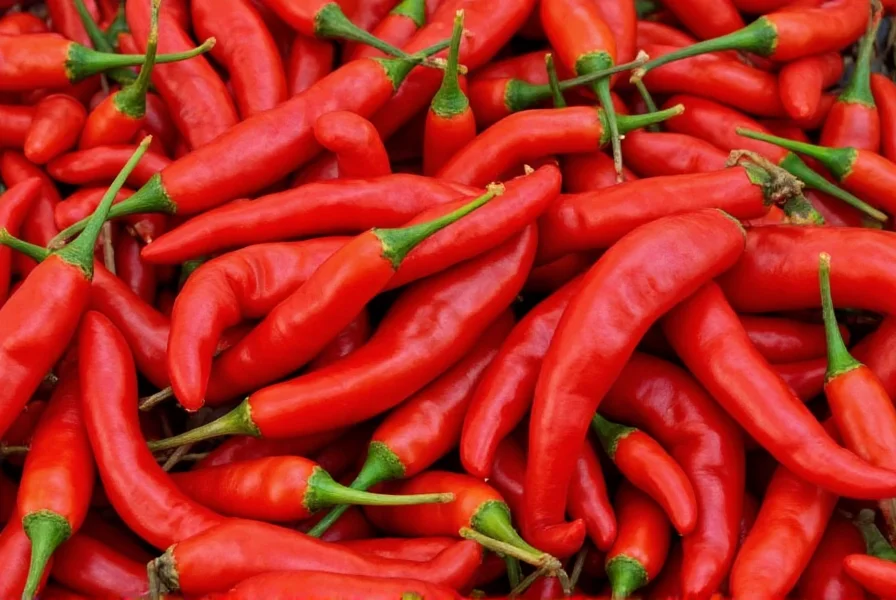For food enthusiasts and history buffs alike, understanding the journey of chili peppers from their ancient origins to global kitchen staple reveals a fascinating story of cultural exchange and botanical adaptation. These fiery fruits didn't just appear on our plates—they traveled across continents through centuries of human exploration and trade.
The Botanical Roots of Chili Peppers
Chili peppers belong to the Capsicum genus within the nightshade family (Solanaceae), which also includes tomatoes and eggplants. Unlike black pepper (Piper nigrum), which comes from a completely different plant family, chili peppers produce capsaicin—the compound responsible for their heat—which evolved as a defense mechanism against mammals.
Archaeological discoveries at sites like the Guilá Naquitz cave in Oaxaca, Mexico, have uncovered chili pepper remnants dating back 6,000-8,000 years. These findings confirm that early Mesoamerican civilizations such as the Olmecs, Mayans, and Aztecs were the first to cultivate and incorporate chili peppers into their daily diets and cultural practices.
| Chili Pepper Variety | Origin Region | Historical Significance |
|---|---|---|
| Capsicum annuum | Mexico | Includes jalapeños, bell peppers; most widely cultivated species |
| Capsicum frutescens | Central America | Source of tabasco peppers; used in traditional medicines |
| Capsicum chinense | Amazon Basin | Includes habaneros; often mistakenly attributed to China |
The Global Journey of Chili Peppers
For millennia, chili peppers remained confined to the Americas until Christopher Columbus's voyages in the late 15th century. Mistakenly believing he had reached India, Columbus dubbed them "peppers" due to their pungency resembling that of black pepper, which was highly valued in European markets.
The true global dissemination began with Portuguese traders in the 16th century. Unlike the Spanish, who initially kept chili cultivation within their American colonies, Portuguese merchants actively spread chili seeds along their trade routes to Africa, India, and Southeast Asia. By the 1540s, chilies had reached India through Portuguese ports like Goa, where they rapidly replaced expensive black pepper in many culinary applications.
This historical spread explains why chili peppers became integral to cuisines far from their Mesoamerican birthplace. In regions like Sichuan China, Thailand, and Hungary, chilies evolved from novel imports to essential ingredients within just a few centuries—a remarkable culinary adaptation story.

Chili Peppers in Ancient Mesoamerican Culture
Beyond mere seasoning, chili peppers held profound cultural significance for pre-Columbian civilizations. The Aztecs used them as both currency and tribute payments, while Mayan codices depict chilies in religious ceremonies. Ancient Mesoamericans developed sophisticated preservation techniques, including smoke-drying to create what we now know as chipotles.
Anthropological evidence suggests chili peppers served multiple purposes in ancient societies:
- Medicinal applications for pain relief and digestive issues
- Pest deterrents when stored with grains
- Ritual components in religious ceremonies
- Preservation aid for meats and other foods
Modern Diversity of Chili Peppers
Today's incredible variety of chili peppers—from mild poblanos to fiery Carolina Reapers—represents centuries of selective breeding. The five domesticated Capsicum species have given rise to over 10,000 cultivars worldwide, each adapted to local growing conditions and culinary preferences.
Genetic studies confirm that all domesticated chili peppers trace back to wild ancestors in Mesoamerica, with subsequent diversification occurring after their introduction to new regions. This botanical journey makes chili peppers one of the most successful global food migrations in human history.
Understanding Chili Pepper Terminology
The term "chili" itself derives from the Nahuatl (Aztec language) word "chīlli," which Spanish colonizers adapted as "chile." Regional naming conventions vary significantly—what Americans call "chili peppers" are often simply "peppers" in British English, while "capsicum" refers to bell peppers in many Commonwealth countries.
This linguistic diversity reflects the plant's global integration. In Thailand, they're "phrik"; in India, "mirchi"; in Hungary, "babér"—each term carrying centuries of culinary tradition behind it.
Frequently Asked Questions
Where exactly were chili peppers first discovered by archaeologists?
Archaeological evidence from the Guilá Naquitz cave in Oaxaca, Mexico has revealed chili pepper remnants dating back 6,000-8,000 years, representing the earliest known cultivation of chili peppers by ancient Mesoamerican civilizations.
How did chili peppers spread from the Americas to the rest of the world?
After Columbus brought chili peppers to Europe in 1493, Portuguese traders were primarily responsible for their global dissemination. They established trade routes that carried chili seeds to Africa, India, and Southeast Asia in the early 16th century, where they quickly integrated into local cuisines.
Why are chili peppers called 'peppers' when they're not related to black pepper?
Christopher Columbus mistakenly believed he had reached India when he discovered the Americas. He called chili peppers 'peppers' because of their pungent heat resembling that of black pepper (Piper nigrum), despite the two plants being botanically unrelated. The name stuck due to their similar culinary function.
Which country consumes the most chili peppers today?
China is currently the world's largest consumer of chili peppers, followed by India, Mexico, Thailand, and Nigeria. Global consumption has increased dramatically in recent decades, with over 35 million tons of chili peppers produced worldwide annually.










 浙公网安备
33010002000092号
浙公网安备
33010002000092号 浙B2-20120091-4
浙B2-20120091-4